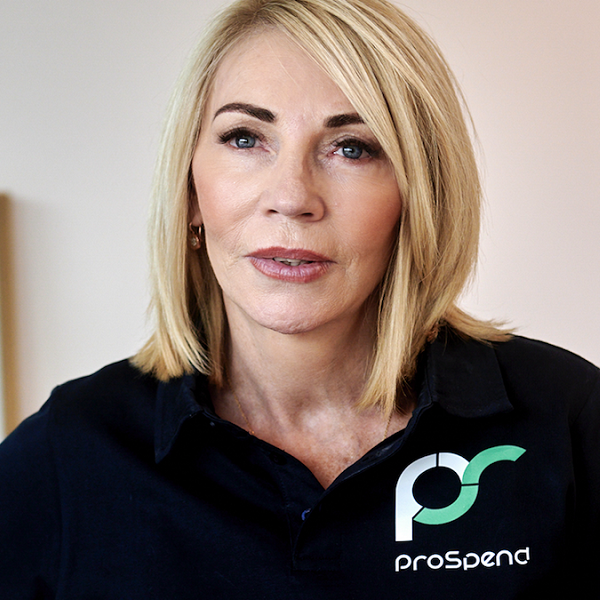
Finance experts reveal top expense management transformation tips
By Sharon Nouh (pictured), Founder & CEO of ProSpend
Many mid-market CFOs are well-positioned to modernise their organisations’ approach to spend and expense management.
However, successful spend management transformation starts not with choosing technology, but with mapping your processes. As organisations expand, finance leaders face increasingly complex challenges balancing strategic vision with technical implementation.
We speak to a number of finance leaders in our new report, Modern Spend and Expense Management: A CFO’s Guide to Financial Transformation. These conversations highlight conscientious and considered approaches to improving the spend management environment.
Comprehensive audit of current processes
“Begin with a comprehensive audit of your current processes. Understand the gaps clearly before you seek out solutions. This clarity will ensure your transition doesn’t introduce new challenges,” said Retief Lampen, CFO of advertising technology company iion.
“On the strategy side, it’s all about balancing cost control with growth. The key to tackling these challenges is using real-time, integrated and data-driven expense management tools that improve visibility and control, paired with clear policies that empower teams to spend wisely while keeping the business agile and scalable.”
Of course, implementing new solutions brings its own risks, so Riley Redford, CFO of software development and marketing company Xrii, cautions against creating new problems while trying to solve existing ones.
“While technology adoption is beneficial, rushed decisions often lead to fragmented systems that don’t communicate effectively. Implementation should always start with a deep understanding of end-to-end processes to avoid costly missteps,” Redford said.
“From a strategic standpoint, silos within organisations can hinder spend management. Traditional models often separate departments, making it difficult to get a clear picture of not only where we are financially but also where we are in terms of our growth.
“I make it a point to stay engaged across teams to identify spending trends, growth opportunities, and potential risks early. Clear communication between finance and operational teams is key to producing accurate, insightful financial reports that drive informed decision-making.”
Today’s market realities have linked technology and strategy inseparably. CFOs might struggle to make strategic decisions without modern tools that provide comprehensive visibility.
“The dynamic nature of global markets and the increasing complexity of supply chains require real-time spend visibility and predictive analytics to optimise cash flow management, mitigate risks, and identify opportunities for cost-saving initiatives,” Tax consultant and business advisor Umair Awan points out.
“Achieving this requires a comprehensive spend governance framework and the strategic use of technology to enable continuous monitoring, control, and optimisation of corporate expenditures.”
Spending to Improve Spend
Before investing in spend management solutions, understand exactly what your organisation needs.
“Managing technology spend is a bit like servicing your car,” said Kerryn Divall, CFO for RSL New South Wales.
“You know there is something wrong but have no idea how to fix it and so you have to trust that you have a great mechanic that won’t rip you off.
“I have been in organisations, particularly not-for-profit, where the level of understanding is low and vendors take advantage of the customer. Internally, it is really important to upskill and educate your teams on at least the basics.
Andrew Mooney, a fractional CFO who has held financial leadership roles for Sheldon, Asia Pacific Mining Limited and Compass Resources, focuses on long-term value rather than immediate cost.
“The main challenge to financial leaders in managing corporate spend is not to focus on the spend per se but to ask whether the spend is appropriate for the business today, next year or in five years. Then, ask what measures you can take to get the most value from the spend,” Mooney said.
“This is a combination of zero-based budgeting and short-, medium-, and long-term forecasting, and it needs to be a continual process.”
According to Morgan Wilson, Founder and Director of Brisbane-based accounting firm Creditte, Agility is often an important concept to consider when looking to improve processes around spend.
“Strategically, CFOs must balance cost control with agility, ensuring they have the right data to make proactive decisions while maintaining compliance and governance,” Wilson said.
Modernising expense management requires balancing technical integration, strategic goals, and organisational change.
A transformation project should include auditing, planning and success KPIs. As part of our new ebook, Modern Spend and Expense Management: A CFO’s Guide to Financial Transformation, we’ve included a CFO Action Plan with key steps for CFOs to transform expense management.
Organisations that can deliver this change will benefit from a strategic asset that enables more informed decisions, improved cash flow visibility, and sustainable growth.
This article is an adapted excerpt from a comprehensive report from Prospend exploring spend management challenges and change. For more insights on transforming your financial operations, download the complete Modern Spend and Expense Management: A CFO’s Guide to Financial Transformation eBook.


